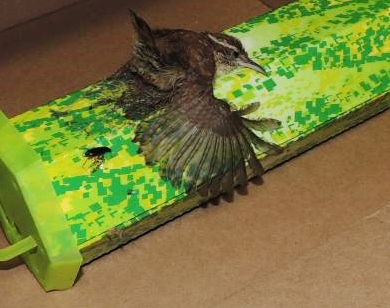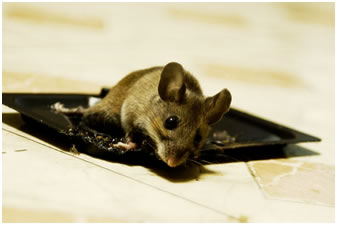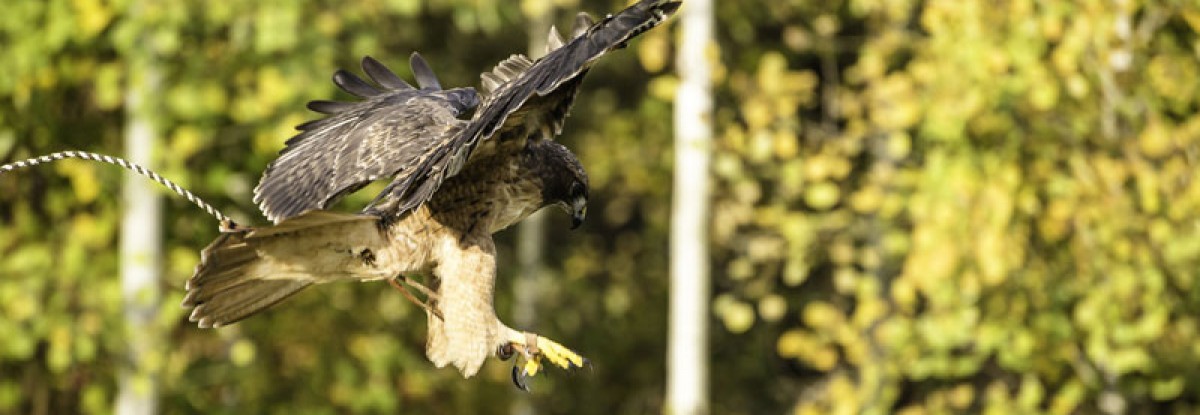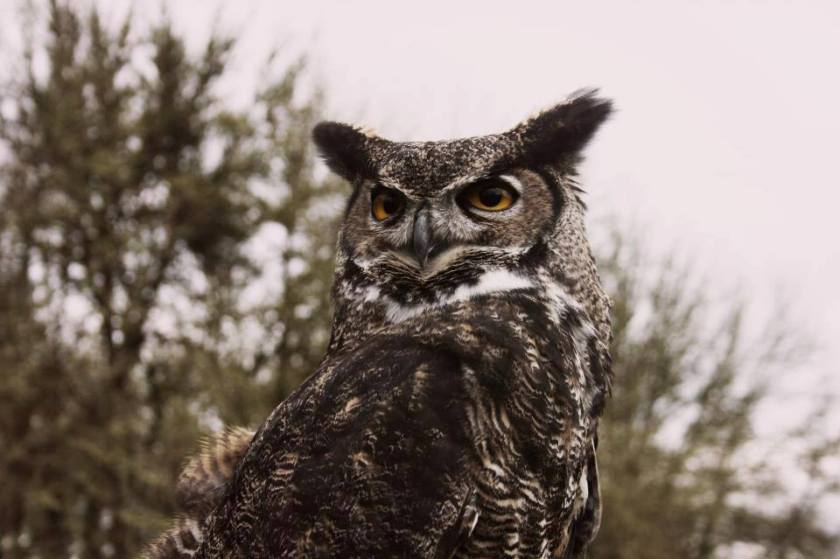
Glue traps are a common, yet inhumane tool for trapping unwanted “guests” who’ve made their homes in undesirable places. Many people choose this method because of its low cost and ease of use, however glue traps remain to be indiscriminate and trap unintended victims such as bats, birds, snakes, and even pets. Any animal attracted by the bait can become ensnared.
Guest writer and CWC Shift Leader Claudia Benfield writes about her experience with glue traps:
My neighbor called me in an emergency the other night. They had left a garage door open and a small bird had flown in. They called me to get it for them. They had thought that maybe it had flown back out. I searched again just to make sure. When I looked up way high on top of one of their cabinets, I saw a small figure struggling. They were having a lot of problems with rats and had put large glue traps on top of the cabinets in an effort to solve one problem and not cause another. But this was not going to be the case after all…
My heart just sunk when I saw that a small finch had his entire body on that glue trap.
I immediately grabbed it and when I examined it, I saw that his little face was stuck on it. I pried his face off and propped it on a stick that would keep it off until I could get him some help. I didn’t want to pry the rest of his body off in fear that I would do more damage than good. So off I went in a mad rush into the night, feeling and wanting so much to have a siren to give me a clear and quick path to the clinic. And don’t you know, this was the night of the big storm that was being predicted. When I was driving I could see it was getting worse out there and people were slowing down. That always happens doesn’t it? As I drove down the road with the finch on my lap, in a silent car with no radio on to keep the bird’s stress level down, I could feel his struggle to break free whenever I made a turn. It made me want to rush even more and I just wanted to save him more and more. Seeing the manner in which he was glued on the trap, I really had little hope for him.
When I finally got to the clinic and halfway parked my car, I ran in and there were three girls waiting for me from the Thursday PM shift. I just asked them for help and they jumped right in to help. I told them what the animal care director had told me to do and what medicine would get him off the glue. They just took over which at this point I was very thankful for. By this time, I felt like he was a family member that I had to save. My heart was racing way too much with worry. Too many invested emotions for me at this point. I helped a little but they were just so awesome. The medicine that can get animals off of glue traps is just a miracle in a bottle too. We sprayed the liquid on him and he came right off. When I saw that he was free, I breathed a huge sigh of relief.
It was all so amazing. He still looked rough and had some bruises under his wing but it seemed that he might be able to recover. Every time that I am convinced that there is no hope for the one that I am saving, it has been the opposite. Thankfully life always seems to make a fool out of me. In that case, I can take that any day. I am now hopeful that maybe my finch may just have another chance. I am glad that I can hope for another miracle.

Unfortunately, this is not an isolated case. This is an all-too-common scenario that we as wildlife rehabilitators encounter over and over. But you can help.
What should you do if you find an animal stuck to a glue trap?
- First, contact your local wildlife rehabilitator! If you need help finding one in your area, check out this state-by-state listing:
How To Find A Wildlife Rehabilitator
- If you are unable to find immediate help, use caution when handling the animal and only attempt if you are comfortable with the following procedure recommended by The Humane Society:
What Should I Do If I Find An Animal Stuck To A Glue Trap?
- Lastly, please do not purchase or use glue traps! For more humane ways of approaching wildlife control see this and this.



